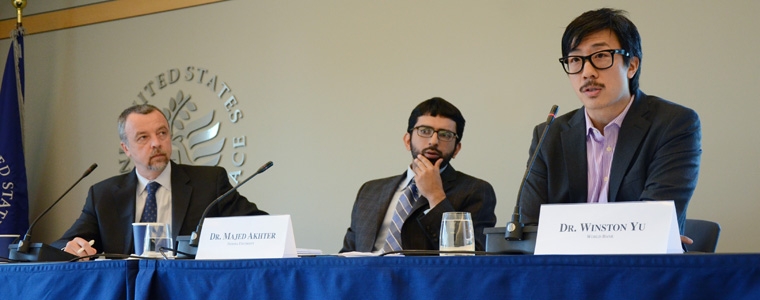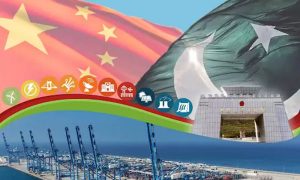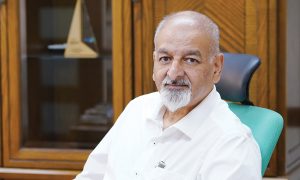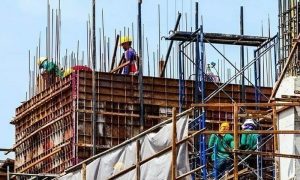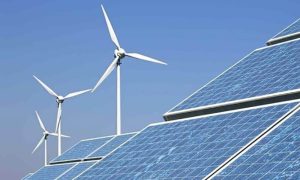A National Conference on “CPEC: Macro and micro economic dividends for Pakistan and the region,” was jointly organized by Islamabad Policy Research Institute (IPRI) and Hanns Seidel Foundation at Islamabad.
It proved to be a good platform to highlight opportunities and challenges attached to China Pakistan Economic corridor. Economists have projected that China Pakistan Economic Corridor (CPEC) is expected to enhance economic growth of the country by 2 percent by 2020 and an additional 1.5 percent by 2030, besides creating 1.5 to 2 million jobs per annum.
However, they raised questions on transparency in CPEC projects, while terming the 17000MW energy projects worth over $34 billion as the most expensive.
“Unfortunately, CPEC is a well-guarded secret and with little info that is available; it is not possible to separate myth from reality,” economists and diplomats lamented while addressing the conference.
They also raised questions about strategy of the government on the CPEC, hurdle of bureaucracy, governance, and concern about capacity and urged for revisiting Free Trade Agreement (FTA) with China.
Former Minister of Finance and current Chairman Pakistan-China Centre for Economic Cooperation, Lahore Dr Salman Shah said real benefit of the CPEC depends on China’s and Pakistan’s commitment to greater economic integration.
He said that government of Pakistan’s goal should be to establish a working framework and agreements for a financial commercial, manufacturing about knowledge alliance with China. He said that we could achieve $300 billion to $700 billion of GDP target till 2025, and external balance trade of Rs700 billion/year.
He said on one side, the great companies oriented to the export market with access to Chinese financing and partnerships will greatly benefit. However, when economic power will be concentrated in the efficient producers that can count on foreign financing, most small and medium size businesses that have to confront high financial costs in order to improve their technological capacity will be left behind, he warned.
Dr Shah predicted that most industrial companies from Pakistan that will benefit from the FTA with China will be those that develop networks to distribute their products or establish long-term agreements with Chinese producers and/or distributors.
He said that Chinese textile shifting to Pakistan will not only enable China to continue its dominance of the world’s textile business, it will also improve Pakistani plants capacity to come up to the former’s productivity levels. He was hopeful that CPEC along with an effective FTA can make Pakistan one of the most attractive investment and manufacturing sites in the world.
He said that this would enable Pakistan to sustain its national security with underpinning of a strong economic base in face of a resurgent and aggressive India.
He said that the CPEC could acquire great importance for developing global competitive advantage for Pakistan through connectivity, access to markets, skills development, know-how, and transfer of technology and availability of financial resources.
He said it is an economic imperative for China and Pakistan to increase and fortify their economic integration as the basis of increasing their regional economic power and to face the competition presented by the other regional economic blocs.
Shah said that the CEPC will provide China with a direct access to western Indian Ocean and it will also provide opportunity to Pakistan to become a logistics hub for Central Asia, Western Asia and Western China. He said that the link will provide an opportunity for both countries to promote greater economic integration of the two economies.
He said that China could be a big source of investment capital technology and know-how for developing Pakistan’s economic potential, generating a growth of 8 to 10 % per annum, boosting exports and generating economic prosperity over the next 30 years. This would require pursuing a national agenda for economic integration with China.
Dr Ashfaque Hassan Khan, Principal and Dean School of Economics, NUST, Islamabad, said that the CPEC may change the face of Pakistan’s economy, if all goes well. He said that today half a million tonnes of cargo is being handled via Gwadar. Next year, it is expected to reach a million, he said. However, when the port becomes fully functional, it will have the capacity to handle 300 to 400 million tonnes of cargo, he said.
Asad Ali Shah, Assistant Chief, Ministry of Planning, Development & Reform said the Corridor is not restricted to a single alignment, rather all provincial capitals are included as nodes, with joint feasibility surveys carried out. He said that selection of commercial companies is being done through a fair and impartial bidding process. “CPEC is a game changer because its main focus for Pakistan is not only on interconnectivity, but also on clean energy given the development of hydro, wind and solar power projects in order to increase the proportion of non-fossil energy consumption,” he said.
Through the CPEC, Pakistan can now focus on exploring and utilizing its domestic coal resources to improve self-sufficiency under projects such as the Thar Power Coal Plant; Thar Power Sino Sindh Resources Coal Plant and the Hubco Coal Power Plant, amongst others, with an estimated coal generation of 4290 MW by 2017-2018, he said.
Former Ambassador Sohail Amin, President IPRI, said the CPEC infrastructure projects, including the processing and industrial production zones along the Corridor route once completed would open up and connect the least developed districts of Balochistan, Khyber Pakhtunkhwa, and Gilgit-Baltistan, with the mainstream national and even regional economies.
Dr Mujahid Kamran, Vice Chancellor, Punjab University, Lahore, said that Pakistan’s strategic location and its great mineral resources given it an edge in the region. However, he warned that while the CPEC is an opportunity, it is also a challenge for Pakistan since it requires economic and governance reforms, along with a massive investment in trained and educated manpower.
Khalid Rahman, Director General Institute of Policy Studies (IPS), Islamabad, analyzed CPEC’s economic benefits to China from three different yet entwined contexts: bilateral; in the context of OBOR; and in the larger context of changing Chinese role in the world. He said that the CPEC serves as the backbone for the ‘One Belt One Road’, making the two-way connectivity between the Middle East, Gulf and Africa and South and Central Asia easier, cost-effective and efficient.
Dr Ather Maqsood Ahmed, HoD Economics Department, National University of Science and Technology (NUST), Islamabad, reviewing the economic dividends of CPEC for Pakistan, outlined its importance for the agriculture, industrial and services sectors.
He highlighted that while agricultural development of China and Pakistan will take place on the principle of comparative advantage and mutual benefit, achieving the objectives of the 17 agriculture-centric projects is dependent on how quickly counterpart experts in specific areas are assigned, public-private partnership is developed and federal and provincial governments are aligned.
Prof. Dr Syed Irfan Hyder, Dean CBM and CES, Institute of Business Management (IBM), Karachi, lamented lack of specific information for making investment decisions. He was of the view that the environmental costs of the CPEC should be calculated, while also keeping in mind that Balochistan is already a troubled area.
Dr Jahangir Khan, Associate Professor, Department of Economics, University of Balochistan, Quetta, pointed out that intra-regional trade among the members of SAARC and ECO countries is around 5% of their total trade which does not match the inherent trade potential.


